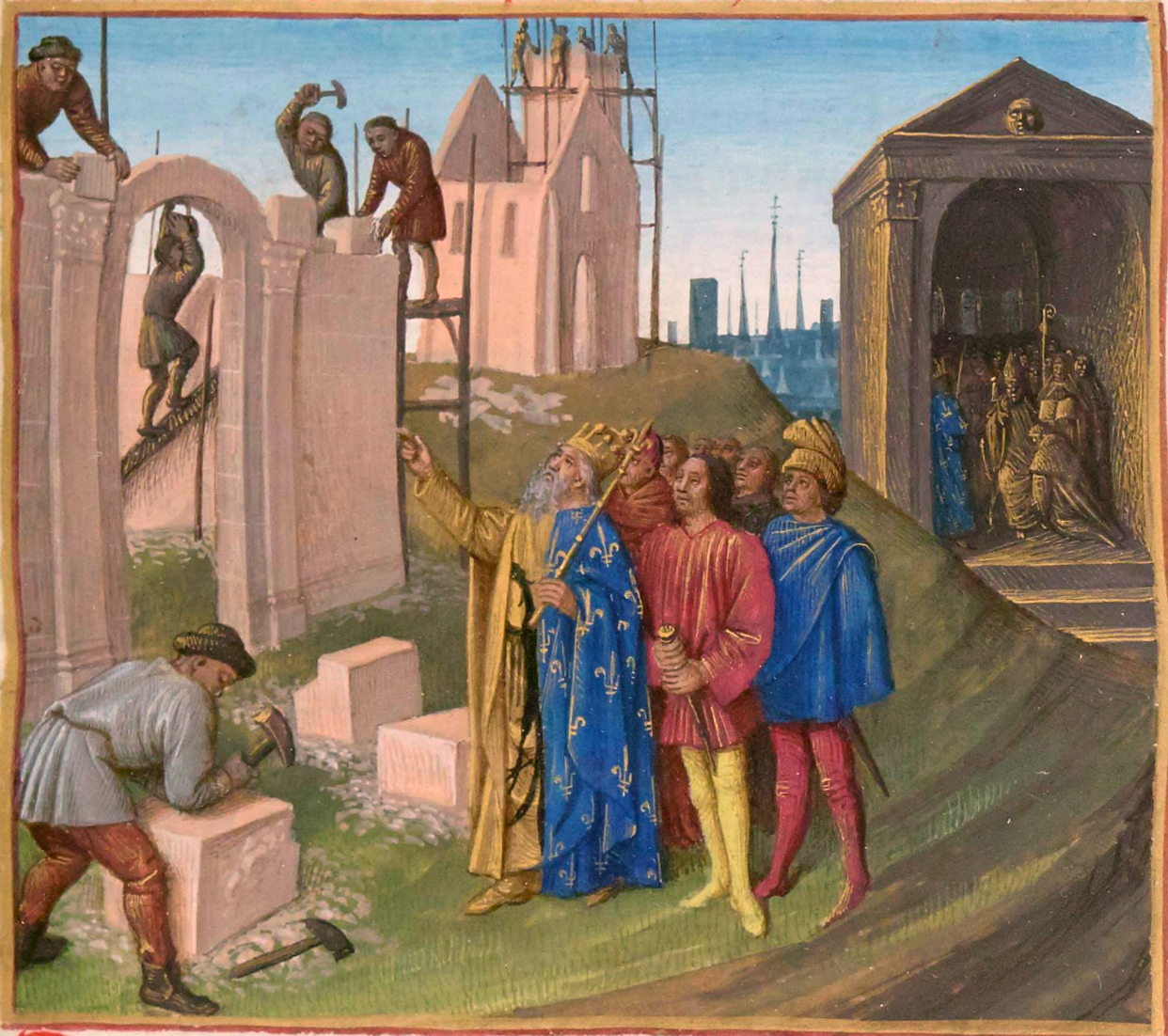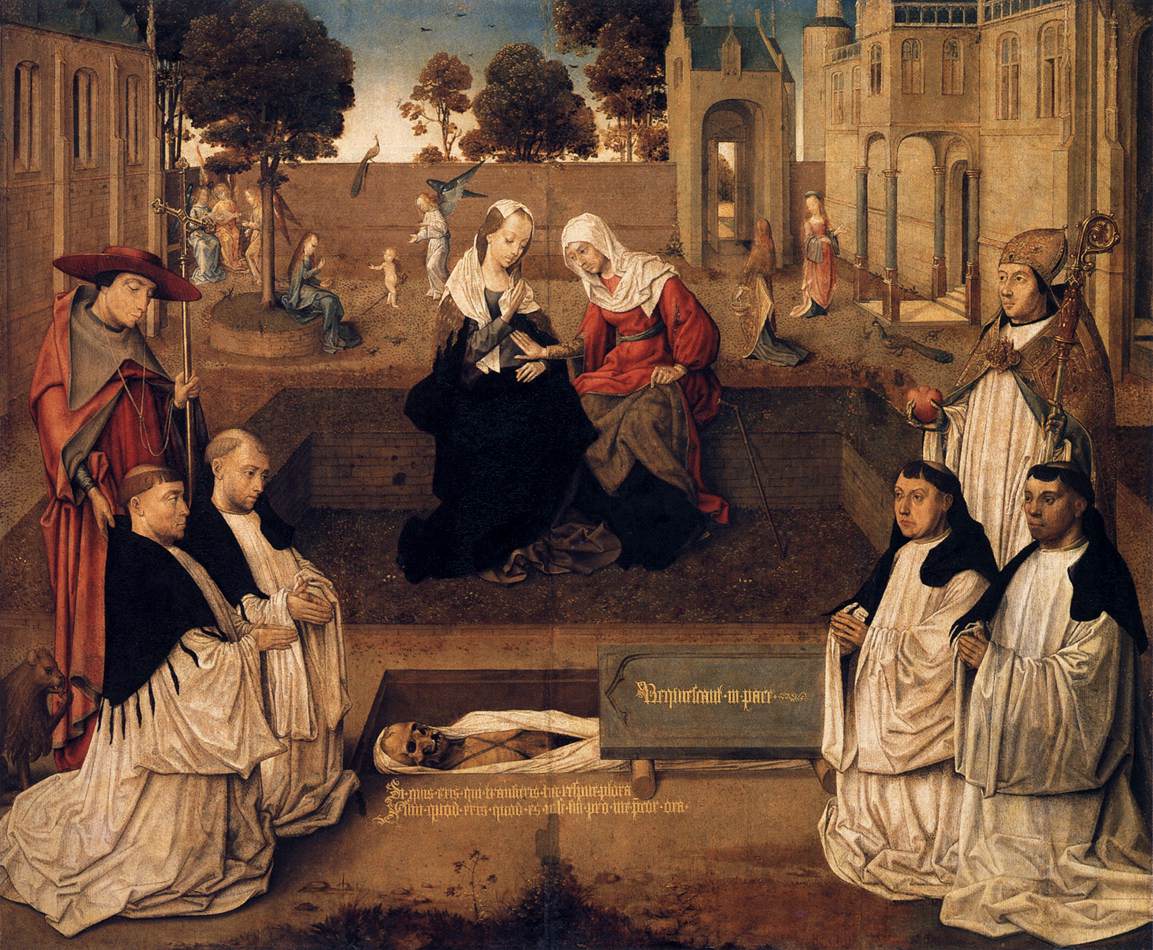|
Institutio Canonicorum Aquisgranensis
The ''Institutio canonicorum Aquisgranensis'' ('Instruction of Canons of Aachen') was a text disseminated in 816 at a church council gathered at Aachen (Aix-la-Chapelle) by Emperor Louis the Pious, which sought to distinguish canons from monks and to provide canons with a rule, called the ''Regula canonicorum'' (Rule of Canons) or Rule of Aix. The ''Institutio'' consists of a prologue, a collection of texts from Church Fathers, and the rule itself. Similar to Chrodegang's Rule (itself at times called the ''Regula canonicorum''), it differed on certain points. It was, for instance, more insistent on canons living a common life, eating and sleeping together. Yet canons were allowed to hold private property, and, with their bishop's permission, even have their own houses. In the beginning of the eleventh century, the ''Institutio'' itself and a version of Chrodegang's rule with interpolations from the Rule of Aix were put forth as models for reforming Cathedral chapters. During the ... [...More Info...] [...Related Items...] OR: [Wikipedia] [Google] [Baidu] |
Synods Of Aachen (816–819)
The Synods of Aachen between 816 and 819 were a landmark in regulations for the monastic life in the Frankish realm. The Benedictine Rule was declared the universally valid norm for communities of monks and nuns, while canonical orders were distinguished from monastic communities and unique regulations were laid down for them: the Institutio canonicorum Aquisgranensis. The synods of 817 and 818/819 completed the reforms. Among other things, the relationship of church properties to the king was clarified. Background The monastic life played an important role in spiritual and intellectual life in the Frankish realm. The orders had important tasks in church life. But they were also significant for the economic and intellectual integration of new territories, such as Saxony into the empire; several cloisters were closely connected with the ruling house. However, the orders were not uniformly organised. In the previous centuries, mixed rules (''regula mixta'') dominated. Such a mix ... [...More Info...] [...Related Items...] OR: [Wikipedia] [Google] [Baidu] |
Aachen
Aachen is the List of cities in North Rhine-Westphalia by population, 13th-largest city in North Rhine-Westphalia and the List of cities in Germany by population, 27th-largest city of Germany, with around 261,000 inhabitants. Aachen is located at the northern foothills of the High Fens and the Eifel Mountains. It sits on the Wurm (Rur), Wurm River, a tributary of the Rur (river), Rur, and together with Mönchengladbach, it is the only larger German city in the drainage basin of the Meuse. It is the westernmost larger city in Germany, lying approximately west of Cologne and Bonn, directly bordering Belgium in the southwest, and the Netherlands in the northwest. The city lies in the Meuse–Rhine Euroregion and is the seat of the Aachen (district), district of Aachen ''(Städteregion Aachen)''. The once Celts, Celtic settlement was equipped with several in the course of colonization by Roman people, Roman pioneers settling at the warm Aachen thermal springs around the 1st cen ... [...More Info...] [...Related Items...] OR: [Wikipedia] [Google] [Baidu] |
Louis The Pious
Louis the Pious (; ; ; 16 April 778 – 20 June 840), also called the Fair and the Debonaire, was King of the Franks and Holy Roman Emperor, co-emperor with his father, Charlemagne, from 813. He was also King of Aquitaine from 781. As the only surviving son of Charlemagne and Hildegard (queen), Hildegard, he became the sole ruler of the Franks after his father's death in 814, a position that he held until his death except from November 833 to March 834, when he was deposed. During his reign in Aquitaine, Louis was charged with the defence of the empire's southwestern frontier. He Siege of Barcelona (801), conquered Barcelona from the Emirate of Córdoba in 801 and asserted Frankish authority over Pamplona and the Basques south of the Pyrenees in 812. As emperor, he included his adult sons, Lothair I, Lothair, Pepin I of Aquitaine, Pepin and Louis the German, Louis, in the government and sought to establish a suitable division of the realm among them. The first decade of his reig ... [...More Info...] [...Related Items...] OR: [Wikipedia] [Google] [Baidu] |
Canon (priest)
Canon () is a Christian title usually used to refer to a member of certain bodies in subject to an ecclesiastical rule. Originally, a canon was a cleric living with others in a clergy house or, later, in one of the houses within the precinct of or close to a cathedral or other major church and conducting his life according to the customary discipline or rules of the church. This way of life grew common (and is first documented) in the 8th century AD. In the 11th century, some churches required clergy thus living together to adopt the rule first proposed by Saint Augustine that they renounce private wealth. Those who embraced this change were known as Augustinians or Canons Regular, whilst those who did not were known as secular canons. Secular canons Latin Church In the Latin Church, canons are the members of a chapter, that is a body of senior clergy overseeing either a cathedral (a cathedral chapter) or a collegiate church. Depending on the title of the church, several lan ... [...More Info...] [...Related Items...] OR: [Wikipedia] [Google] [Baidu] |
Monks
A monk (; from , ''monachos'', "single, solitary" via Latin ) is a man who is a member of a religious order and lives in a monastery. A monk usually lives his life in prayer and contemplation. The concept is ancient and can be seen in many religions and in philosophy across numerous cultures. The Greek word for "monk" may be applied to men or women. In English, however, "monk" is applied mainly to men, while '' nun'' is typically used for female monastics. Although the term ''monachos'' is of Christian origin, in the English language ''monk'' tends to be used loosely also for both male and female ascetics from other religious or philosophical backgrounds. However, being generic, it is not interchangeable with terms that denote particular kinds of monk, such as cenobite, hermit, anchorite, or hesychast. Traditions of Christian monasticism exist in major Christian denominations, with religious orders being present in Catholicism, Lutheranism, Oriental Orthodoxy, Eastern Orth ... [...More Info...] [...Related Items...] OR: [Wikipedia] [Google] [Baidu] |
Church Fathers
The Church Fathers, Early Church Fathers, Christian Fathers, or Fathers of the Church were ancient and influential Christian theologians and writers who established the intellectual and doctrinal foundations of Christianity. The historical period in which they worked became known as the Patristics, Patristic Era and spans approximately from the late 1st to mid-8th centuries, flourishing in particular during the 4th and 5th centuries, when Christianity was in the process of establishing itself as the State church of the Roman Empire, state church of the Roman Empire. For many denominations of Christianity, the writings of the Ante-Nicene Fathers, Nicene Fathers and Christianity in the 5th century#Post-Nicene Fathers, Post-Nicene Fathers are included in Sacred tradition, Sacred Tradition. As such, in traditional dogmatic theology, authors considered Church Fathers are treated as authoritative for the establishment of doctrine. The academic field of patristics, the study of the Chu ... [...More Info...] [...Related Items...] OR: [Wikipedia] [Google] [Baidu] |
Chrodegang Of Metz
Chrodegang (; ;Spellings of his name in (Latin) primary sources are extremely varied: Chrodegangus, Grodegandus, Grodegangus, Grodogangus, Chrodogandus, Krodegandus, Chrodegrangus, Chrotgangus, Ruotgangus, Droctegangus, Chrodegand, and Sirigangus. In English it is also found as Godegrand, Gundigran, Ratgang, Rodigang, and Sirigang. died 6 March 766) was the Frankish Bishop of Metz from 742 or 748 until his death. He served as chancellor for his kinsman, Charles Martel. Chrodegang is claimed to be a progenitor of the Frankish dynasty of the Robertians. He is recognized as a saint in the Catholic Church. Biography He was born in the early eighth century at Hesbaye (Belgium, around the old Roman civitas of Tongeren) of a noble Frankish family,Mershman, Francis. "St. Chrodegang." The Catholic Encyc ... [...More Info...] [...Related Items...] OR: [Wikipedia] [Google] [Baidu] |
Cathedral Chapter
According to both Catholic and Anglican canon law, a cathedral chapter is a college of clerics ( chapter) formed to advise a bishop and, in the case of a vacancy of the episcopal see in some countries, to govern the diocese during the vacancy. In the Catholic Church their creation is the purview of the Pope. They can be ''numbered'', in which case they are provided with a fixed prebend, or ''unnumbered'', in which case the bishop indicates the number of canons according to the ability of diocesan revenues to support them. These chapters are made up of canons and other officers, while in the Church of England chapters now include a number of lay appointees. In some Church of England cathedrals there are two such bodies, the lesser and greater chapters, which have different functions. The smaller body usually consists of the residentiary members and is included in the larger one. Originally, the term "chapter" referred to a section of a monastic rule that was read out daily dur ... [...More Info...] [...Related Items...] OR: [Wikipedia] [Google] [Baidu] |
Gregorian Reforms
The Gregorian Reforms were a series of reforms initiated by Pope Gregory VII and the circle he formed in the papal curia, c. 1050–1080, which dealt with the moral integrity and independence of the clergy. The reforms are considered to be named after Pope Gregory VII (1073–1085), though he personally denied it and claimed his reforms, like his regnal name, honoured Pope Gregory I. Overview The Gregorian reform was a frontal attack against the political-religious collusion dating from the Carolingians, in which institutions and church property were largely controlled by secular authorities while the clerics from pope and bishop to country priest were subject by customary law to the authority of the emperor, the king, the prince or the lord. The following practices were thus most protested against: # The investiture of clerics or the handing over of a religious function to a cleric by a layman: The custom had, in the eyes of the reformers, led to the greatest aberrations i ... [...More Info...] [...Related Items...] OR: [Wikipedia] [Google] [Baidu] |
Canons Regular
The Canons Regular of St. Augustine are Catholic priests who live in community under a rule ( and κανών, ''kanon'', in Greek) and are generally organised into Religious order (Catholic), religious orders, differing from both Secular clergy, secular canons and other forms of religious life, such as clerics regular, designated by a partly similar terminology. As religious communities, they have laybrothers as part of the community. At times, their Orders have been very popular: in England in the 12th century, there were more houses of canons (often referred to as an abbey or canonry) than monasteries of monks. Preliminary distinctions All canons regular are to be distinguished from canon (priest), secular canons who belong to a resident group of priests but who do not take religious vows, public vows and are not governed in whatever elements of life they lead in common by a historical rule. One obvious place where such groups of priests are required is at a cathedral, where ... [...More Info...] [...Related Items...] OR: [Wikipedia] [Google] [Baidu] |







